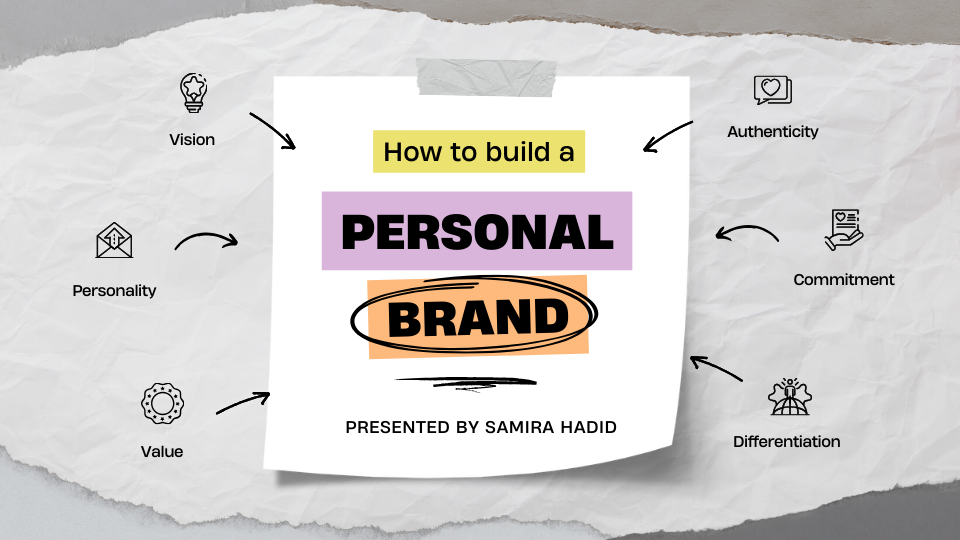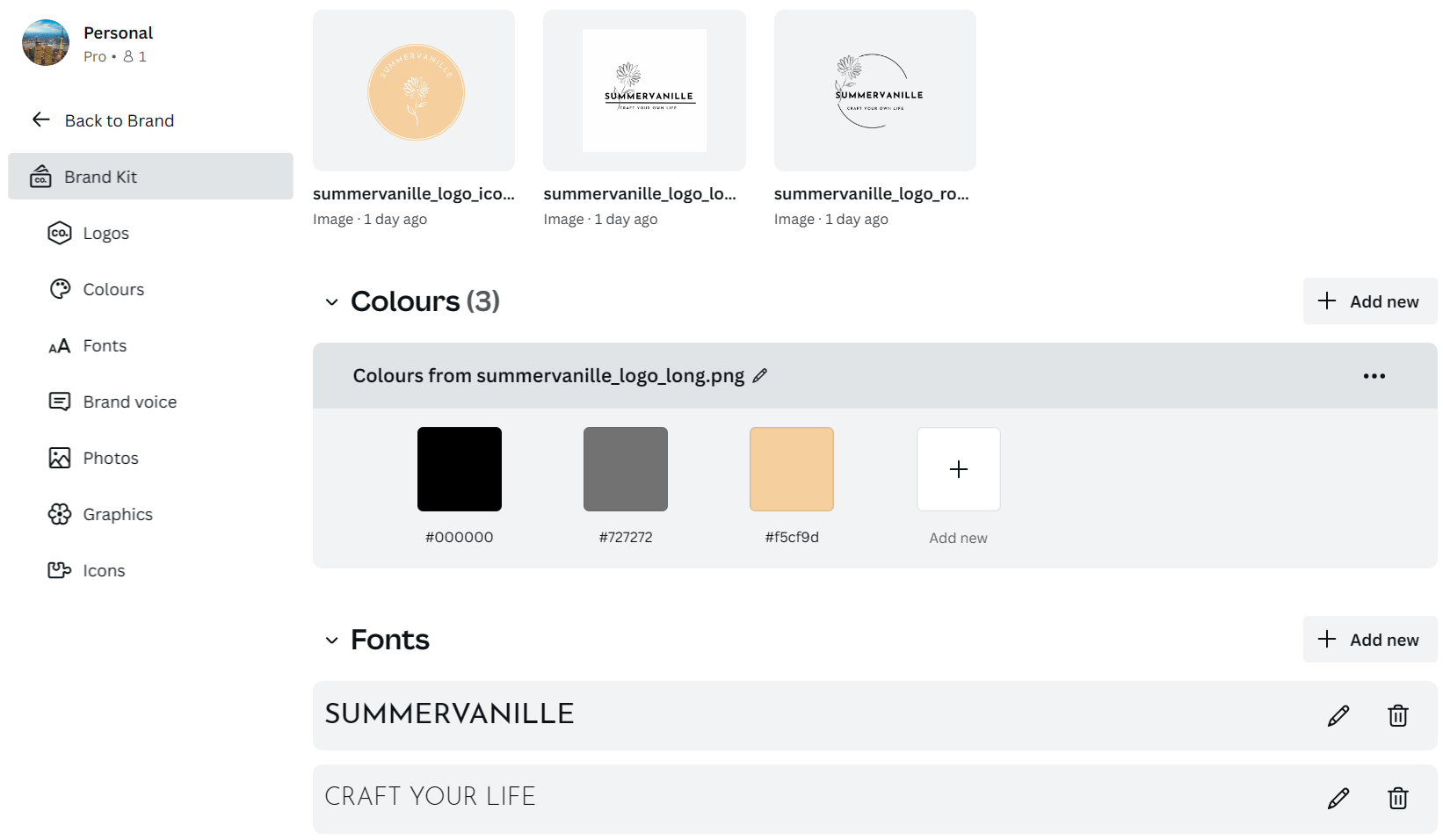Overview on this article:
- Transitioning from Company Branding to Personal Branding
- User-Friendly Tools and Strategies for Crafting Your Personal Brand
- Harnessing Your Personal Influence on LinkedIn for Career Growth
- The Importance of a Personal Website in Boosting Your Brand
What is branding?
Branding, a fundamental aspect of marketing, creates a unique identity for products, services, and individuals. It involves establishing a brand's personality, values, and positioning in the minds of the target audience.
Why don't we begin by establishing our personal brand? In essence, the fundamental principles of brand building, such as authenticity, consistency, and understanding the target audience, are applicable to both personal and corporate branding. By learning how to brand ourselves, we can also gain valuable insights into the intricacies of branding a company.
Why do we need personal branding?
- Career Goals: It can help you establish credibility, showcase your expertise, and attract opportunities.
- Networking: A personal brand not only facilitates networking by connecting with like-minded individuals in your industry but also establishes a memorable identity associated with your skills and values.
- Online Presence: In today's digital age, being online is essential. Your personal brand lets you manage and control how people see you on the internet.
- Entrepreneurship: If you're an entrepreneur or aspiring to be one, a personal brand can be essential for building trust with potential customers or clients.

Strategies and approaches on personal branding
- Brand Identity: The visual and conceptual representation of a brand
- Logo: A visual symbol that represents the brand.
- Color Palette: Consistent colors associated with the brand.
- Typography: Specific fonts used in branding materials.
- Visual Stype: The overall look and feel of brand materials.
- Brand Messaging:
- Tagline/Slogan: A short, memorable phrase associated with the brand. For example, Nike's well-known slogan is "Just Do It."
- Brand voice: The tone and style of written and spoken communication, such as confident, positive or passionate.
- Brand Storytelling: Creating a narrative that communicates the brand's history, values, and mission. For personal branding, it involves a narrative that communicates who you are, your values, experiences, and the journey that has shaped you.
- Define Your Unique Selling Proposition (USP): Identify what sets you apart from others in your field. What unique qualities, skills, or experiences do you bring to the table?
- Target Audience Identification: Define your target audience or the people you want to connect with. Tailor your personal brand to resonate with their needs and interests.
- Stay Consistent and Authentic: Ensure your profiles across different platforms convey a cohesive personal brand message, and be genuine in your interactions, and let your personality shine through.
- Content Sharing and Creation: Share valuable content within your expertise, contemplating the creation of original materials like articles, blog posts, or videos to demonstrate your knowledge, ensuring consistency in using the same brand voice.
- Share on Relevant Platforms: Choose platforms where your audience is likely to engage with your story, whether it's on social media, a personal website, or other professional networking sites.
- Networking and Interaction: Proactively network online and offline by participating in the relevant events, joining professional groups, and connecting with like-minded individuals, while also encouraging audience engagement through feedback and sharing experiences.
- Brand Recognition: The ability of consumers to identify and recall the brand easily.
- Brand Guidelines: A set of rules and standards that dictate how the brand should be presented across various channels.
- Brand Assets: Tangible elements associated with the brand, such as marketing materials, packaging, and digital assets.
- Brand Equity: The overall value of a brand, including its reputation and consumer perceptions.
- Tailor Your LinkedIn Banner: Optimize your banner size to 1584 * 396px. Easily create a personalized banner using Canva.
- Optimize Profile: Use a professional picture, create a compelling headline, and write a compelling summary.
- Professional picture: a clear, high-quality photograph featuring an individual in appropriate attire, displaying a confident and approachable demeanor against a neutral background, suitable for use in various professional contexts.
- Headline: tailor your headline to highlight your specific strengths, skills, and areas of expertise within the broad field of marketing. Additionally, using keywords relevant to your industry can enhance your visibility in LinkedIn searches.
- Summary: Craft a concise and engaging LinkedIn summary by focusing on your key achievements, relevant skills, and a touch of personality, incorporating industry keywords for searchability.
- Use Keywords: Incorporate relevant keywords in your profile to enhance discoverability. Search algorithms on platforms like LinkedIn rely heavily on keywords to match profiles with user queries. By strategically including industry-specific terms, job titles, and relevant skills in your profile, you increase the likelihood of appearing in search results, making it easier for potential connections or employers to find and engage with your professional profile.
- Personalize Your LinkedIn URL: Customize your LinkedIn URL to make your profile easy to share.
- Highlight Experience and Skills: Complete your experience section with detailed role descriptions, showcasing key skills, and actively seek endorsements from colleagues. Highlight specific achievements and results in your roles to demonstrate your impact.
- Engage in Content Sharing: Share valuable content related to your industry or expertise. This can position you as a thought leader.
- Share Your Expertise: Write and publish articles on LinkedIn to share your insights and expertise.
- Connect Strategically: Connect with colleagues, industry professionals, and those aligned with your career goals, personalizing connection requests with a brief message; note that once you exceed 500 connections, it will not display the exact count.
- Recommendations: Request recommendations from colleagues and supervisors to build credibility.
- Complete Control over content marketing: With a personal website, you have full control over the content, design, and structure, allowing you to tailor your online presence to reflect your personal brand precisely.
- Enhanced Creativity: A personal website provides a creative platform to showcase your work, achievements, and personality in a way that goes beyond the constraints of standard professional networking platforms.
- Versatility: Your website can function as a central hub for your professional identity, consolidating your portfolio, blog, resume, and contact information—all in one place, providing a comprehensive resource for professionals.
- SEO Benefits:Having a personal website can improve your visibility in online searches, making it easier for others to find you and learn about your expertise.
- Brand Consistency: A personal website allows you to maintain consistent branding across all online channels, reinforcing a cohesive professional image.
- Professional Email Address: Having your own domain for your website often comes with the option to create a professional email address, further enhancing your brand.
- Increased Customization: You can implement additional features, such as contact forms, analytics, or even an online store if applicable, to meet your specific goals.
💡Canva: A user-friendly platform for creating diverse visual content with an intuitive interface and drag-and-drop functionality, including a brand kit for crafting your own brand identity.

💡The most well-known and user-friendly website builder platforms include Google sites, Wix and WordPress. Nowadays, additional platforms, such as Mailchimp, have also integrated personal website functions, allowing you to build a presentable website for your personal brand in just 1-2 days. Why not try to build your personal website this weekend?
For companies, especially, there are noteworthy points below that merit mention.
🎀 Hands-on: how to brand yourself on LinkedIn?
LinkedIn branding is vital for visibility, networking, and career growth, enabling you to exhibit expertise and establish credibility. Strategically optimize your profile to showcase your professional identity and effectively engage your network. Here are steps to brand yourself on LinkedIn, illustrated by my journey from sales to marketing.


Why the modification is better? The modified LinkedIn summary is better for a person transitioning to a marketing role as it not only highlights a diverse skill set, analytical expertise, and successful role transition but also conveys a results-driven and holistic approach, making it more appealing to potential employers in the marketing field. The addition of emojis and an invitation to connect adds a personalized and engaging touch.
💡Leverage ChatGPT to craft a refined headline and summary for your profile. If you find the initial results lacking, invest additional time in the modification process to further enhance and tailor the language to better suit your preferences and objectives.


While LinkedIn is a widely utilized professional networking platform, considering alternatives like a personal website to showcase your identity, portfolio, and certifications is a valuable idea. Additionally, a personal website serves as an effective tool in marketing strategy, offering benefits such as:
If you choose to go the route of a personal website, ensure that it is well-designed, user-friendly, and reflects your personal brand effectively. Regularly update the content to keep it current and relevant to your professional journey.
In the upcoming articles, I will also guide you on applying marketing skills to enhance your website.
If you have any questions regarding this article or need assistance with building a website, please don't hesitate to reach out.

